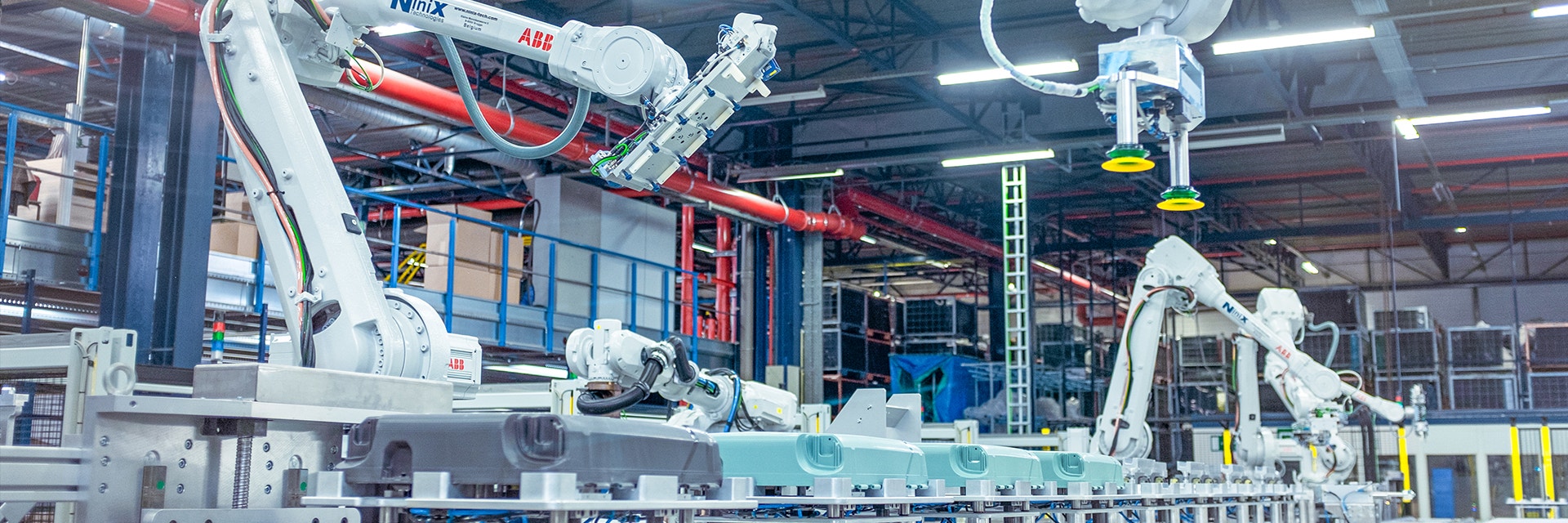EXPERT INSIGHT
Clearing up Common Misconceptions about Integrating AM into Your Traditional Manufacturing Production
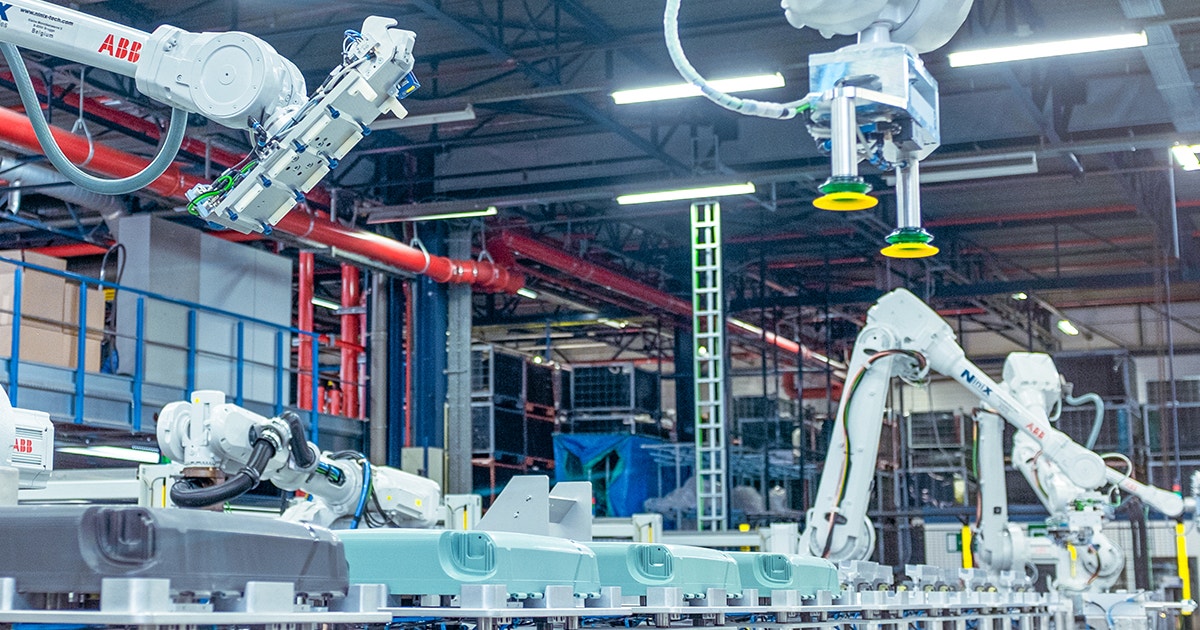
Today, we’re at a pivotal moment in manufacturing. Companies familiar with additive manufacturing (AM) know they can make a difference with 3D printing (3DP). The technology brings tangible benefits, such as flexibility in production, design freedom, customization, and fast time-to-market. AM’s value is no longer in question; that debate is in the past. Now, companies are asking, “How can we combine AM into our conventional production workflows and overcome some widespread challenges that are associated with it?" The answer to disproving some typical misconceptions about integrating AM into a company's business strategy lies in adopting a hybrid production model.
AM is not a new technology. It’s a dependable technology that’s been around for decades. Yet, despite AM's undeniable benefits, companies still struggle to reach the finish line in the adoption journey because of various hurdles.
We commissioned an independent survey of 327 large manufacturing companies in the United States, Germany, and Japan to better understand this change in mindset around 3DP and what’s holding companies back. In that survey, 4 out of 5 respondents found challenges such as quality issues and a lack of production efficiency are still present in their operations.


But are these challenges grounded in reality? Or are they based on common misconceptions about 3DP, such as:
- Companies must choose between AM or traditional manufacturing, and it’s only useful for complicated parts or processes
- Integrating AM into your production workflows effectively is more technically demanding than just sticking to traditional methods
- It’s impossible to ensure consistent quality for 3DP parts and keep data secure in a digital, distributed manufacturing workflow
It's time to address them once and for all.
AM and traditional manufacturing techniques are complementary
Some companies are apprehensive about fully integrating AM into their businesses because of various factors: a lack of knowledge, a fear of increasing equipment costs, perceived complexity, material usage, and general resistance to change, being the most common pain points. However, in most cases, combining AM and traditional manufacturing in your production amplifies efficiency, cuts costs, and is easy to achieve with the right knowledge.
AM is excellent for simplifying complicated parts and processes in ways traditional manufacturing cannot. “Certain customers are attracted to AM for complex components and focus on technical drivers,” says Mathieu Cornelis, Innovation Manager at Materialise. “They look at the technical complexity and think AM is a viable solution for certain issues, like maintaining a reliable supply chain. Now, more customers realize the benefit of using AM for simpler parts where economic drivers play a more significant role.”


Modest, overlooked parts that have short lifetimes, require minimum order quantities, and long lead times (among other factors), will often benefit the most from 3DP. One case is when GE Aviation 3D printed their famous fuel nozzle in one piece, producing a part that’s now 63% lighter compared to the traditionally manufactured part.
Another example is when Signify (then known as Philips Lighting) reinvented a lamp holder bracket and suction gripper that have functioned continuously for several years without breaking once, realizing cost savings of around €89,000 per year.
AM and hybrid production models are also ideal for sectors that need spare parts quickly, like the aviation industry. For instance, we collaborated with EASA-certified design organization Expleo to develop a 3D-printed repair kit that both fixes and strengthens defective aircraft panels on the Boeing 737.
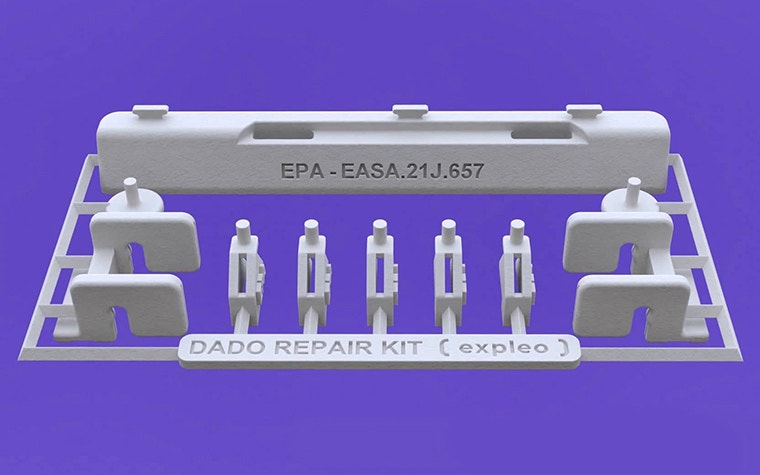

Furthermore, AM and hybrid production models create real value that can potentially change entire sectors. The eyewear and hearing aid industries are perfect examples of how transformative it can be.
Phonak used 3DP and custom software to digitize the normally labor-intensive, manual production process. In less than five years, the industry transitioned to a fully digitalized method that combines personalized 3D-printed shells with traditional electronic inserts.
In comparison, eyewear brands are producing custom 3D-printed frames and designing 3D-tailored eyewear that sits alongside their traditionally manufactured frames. Certain brands are even using bio-based materials to lower their overheads, reduce lead times, and improve product performance —bringing “fast, sustainable fashion” to the public.
These examples illustrate how AM and conventional manufacturing are best suited when used in tandem. With the right know-how, and when applied to the right application, hybrid production models are more effective than just traditional workflows or setting up an entire 3DP factory. Such models take advantage of AM to help companies achieve quick wins or support long-term structural changes within an organization.
Easily integrate AM into your production using process innovation and 3DP software
Integrating AM into your production doesn’t need to be complicated. Process innovation — redesigning tools, combining work steps, or doing small things differently using AM — isn’t technical and offers a fast return on investment (ROI). Hybrid manufacturing models offer companies flexibility to adapt tools or make tweaks to products while still maintaining consistency on the assembly line. This reduces costs and disruption, de-risking production workflows.


In Volvo’s case, we co-created a gluing jig that weighs 64% less and can be delivered in only two weeks at nearly half the price of the previous jig.
Following a methodology/AM strategy and defining your business drivers will help you maximize AM’s full potential. Therefore, companies should consider if they have the in-house expertise and equipment, outsource entirely, or work with a provider with decades of AM experience to lend a helping hand.
Another way companies can speed up the integration process is by using dedicated 3DP software. Software supports every stage of the AM production, and serial production is impossible without it. Our in-house, industry-leading software draws on decades of experience in software development and 3DP. It powers our AM offerings, so it’s put to the test every single day. Plus, many companies in various industries rely on our solutions to seamlessly automate their individual and connected AM workflows.
“We’ve found that achieving repeatable, efficient 3DP production with consistent quality requires optimizing and tracking every single process, which is more straightforward with AM software,” says Bart Van der Schueren, Chief Technology Officer and Executive Vice President at Materialise.
An open, agnostic platform, like the Materialise CO-AM Software Platform, simplifies incorporating a hybrid manufacturing model even further by giving companies visibility and control over all parts of their AM workflows. With process innovation and 3DP, integrating AM and conventional manufacturing concurrently on the factory floor has never been easier.
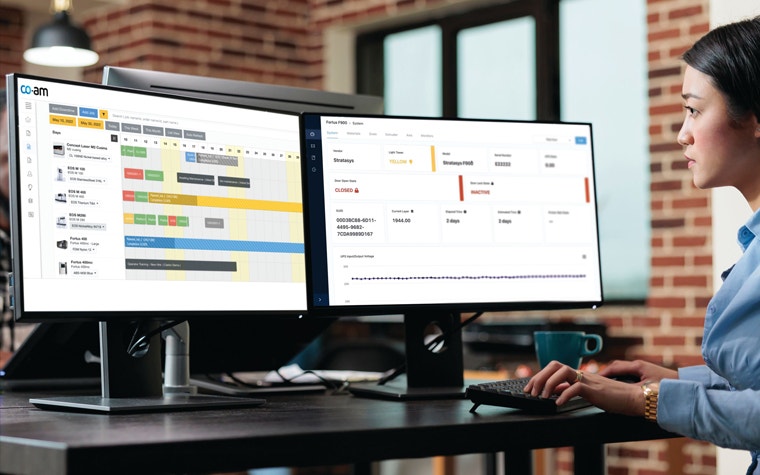

Quality control for AM and smart, distributed manufacturing doesn’t need to be complicated
Recently, we have seen systemic shocks reveal the vulnerabilities of traditional, centralized production models. Companies must gradually move toward digital, distributed manufacturing to enable fully connected supply chains to reduce environmental, social, or geopolitical risks. For example, CNC Industrial mitigated reputational risk when their supply chain ground to a halt by using 3DP to shorten lead times, preventing a potential loss of €189,000.
In the meantime, manufacturing companies can use hybrid production models to help them slowly transition, applying AM in their workflows when appropriate. In fact, some industries already leveraging digital supply chains with specialist AM partners include:
- MRO in aerospace
- Spare parts production in oil and gas
- The outsourcing of production and the development of IP in automotive
- Mass personalization in consumer goods
- Patient-specific parts in medical
Demanding and highly regulated industries, like those mentioned above, need consistent, high-quality end products. eVTOL startup LIFT used AM to produce over 100 flight-ready components for their HEXA aircraft, utilizing our certified AM processes and materials to get their aircraft off the ground in less than 13 months.
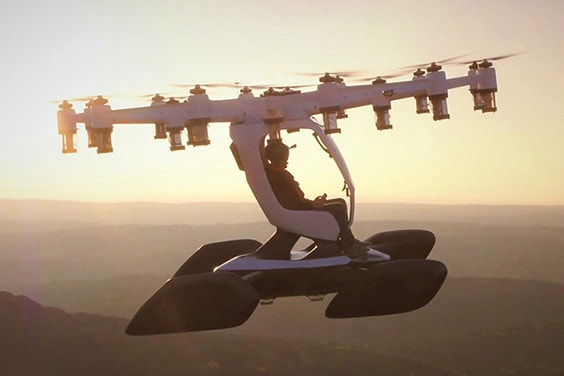

The LIFT team strove to design an aircraft that anybody could pilot. They used AM to create components such as the ENDY bracket — a crucial part of their safety features, with a weight reduction of around 40%.
To future-proof supply chains and ensure repeatable quality, many businesses have turned to distributed manufacturing. But for such production environments to run successfully, one key asset must be present — data. Smart manufacturing at multiple locations will only take off when companies are sure their design data remains secure.
Using a secure platform for digital manufacturing ensures the right people have access to the right data. Thanks to Identify3D, CO-AM encrypts all the data within the platform so that users can securely print across internal facilities and distributed manufacturing networks.
Secure distributed manufacturing gives companies more control and visibility over the 3DP process, making it more efficient, reliable, and repeatable across multiple production sites — benefiting supply chains worldwide.


Keep up with AM: the slow revolution
The walls between 3DP and traditional manufacturing are disappearing. AM is now seen as a growing trend in manufacturing, just behind digitalization, artificial intelligence (AI), and robotics. 94% of our respondents plan to increase their use of AM in the next 12 months. Having the right expertise on hand can dispel common misconceptions about integrating AM into existing production processes. Even a quick AM adoption assessment will make a difference and put you back on track. The slow revolution is picking up pace. And adopting a hybrid production model is an excellent way to make sure you don't get left behind.
Share on:
You might also like
Never miss a story like this. Get curated content delivered straight to your inbox.
